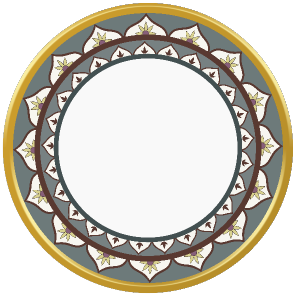

0


0

FOOD
By Banani
11 November, 2016
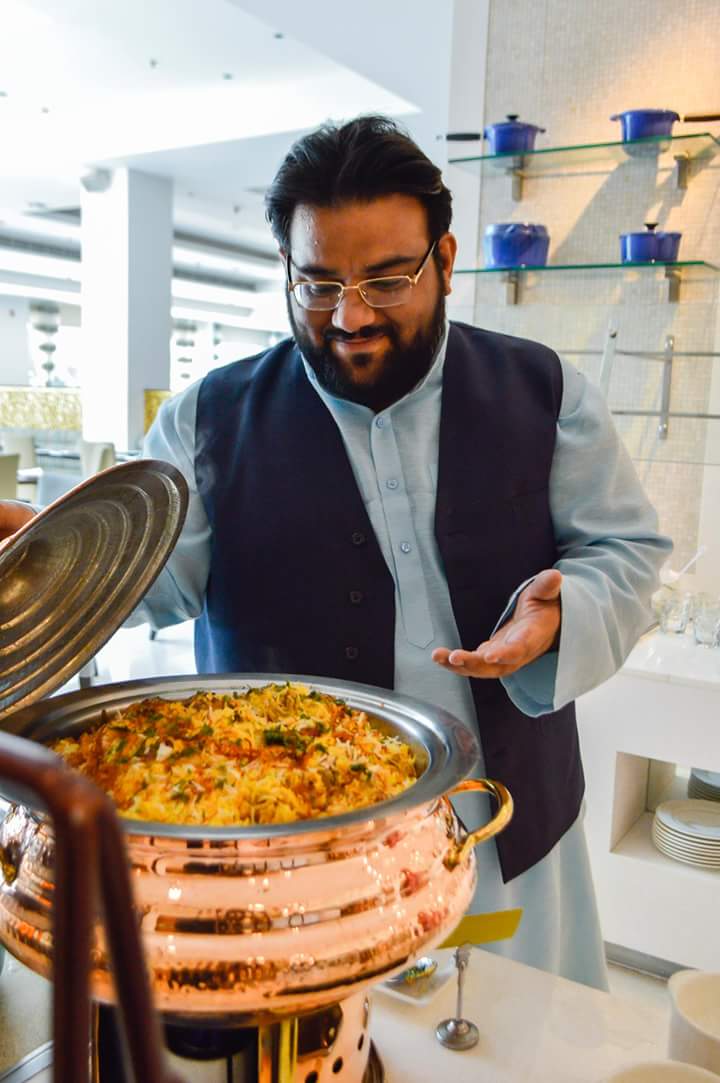
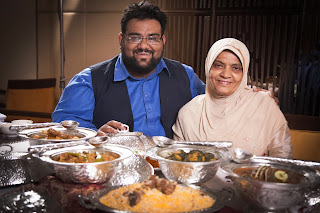 Meet the mother and son duo-Osama Jalali and Nazish Jalali
Meet the mother and son duo-Osama Jalali and Nazish Jalali
Like all food, whether you are talking about Persian or Chinese food, it’s always the reflection of wars, trading, a bunch of good and bad. But what is left is always the food story. Talking on the same lines, Mughlai food would be a great way to peek into their rich culture and history. However, it is quite sad to learn that there are only a few or no places where their originality has been retained.
Somewhere in the lanes of Old Delhi, a family was continuously trying to revive the legacies tied with the royal dishes. It was Jalali’s family- Osama Jalali’s father was a doctor who used to receive all the good food straight from the kitchens of several “Khansamas” after his patients’ ailments used to subside in lieu for his fees. On being asked, the “Khansamas” used to reveal the recipes to his wife, Nazish Jalali who grasped them and tried to incorporate into her cooking.
Gradually, Nazish Jalali along with her son, Osama Jalali, a food writer and a self-taught chef, and daughter-in-law, Nazia Khan formed a team to unlock the secrets of Mughals to present to the world. The trio has followed every step of literary research, listened to long hour chronicles and gather information from every possible related Mughal influenced doors. “We do not know how the actual dish tasted; we did not even have any point of reference neither have any footstep to follow. It’s only the references in bits and pieces which we tried to gather to give a shape which can be admired”, Osama added. They exhibit their modus operandi in the form of food festivals- Shahjahanabad, Rampuri and the Bygone recipes of Mughals.
In the process of resuscitation the Mughal cuisine, they have yet again stepped onto the city glorifying the lounge of Le Jardin, The Oberoi. They have come up with the unique cuisines that speak a lot of the Mughal culture, their choice of food and taste. According to Osama, food always savors great when its authenticity remains undisturbed. The addition of any foreign ingredients or infusing any new techniques to the original dish may seem artistic but most of the time fails to deliver the authenticity of the same to some extent. Hence, he has kept the forgotten/bygone recipes intact straight from the Mughal kitchen.
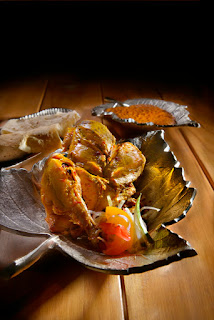 Murgh Zameen
Murgh Zameen
The menu was outlandish with only the magic ingredient used “Pepper”- both white and black pepper. Surprisingly, none of the dishes had red chilies yet the flavor was extraordinary. The Mughals were fond of nuts and sugar, which they mostly use in almost all of their dishes and hence the reflection was seen in the dinner platter.
"Yakhni Kebab", "Macchli ki Shammi" and "Murgh Pateeli Kebab" glorify our dining table as appetizers. Briefing about them all, Yakhni Kebab looks likea small pan- fried patties where the meat was cooked in Yakhn or broth followed by pulling it apart and pounded on a stone giving the shape of patties.
Murgh Pateeli Kabab was exceptional where the chicken breasts served as pockets were filled with nuts and dry fruits and cooked in a “Taambe ki Pateeli” (copper vessel).
Machhli ki Shammi was a preparation of fish in the form of small patties filled with yogurt, onion, fennel and ginger.
Mughals were not the only extoller of non-vegetarian dishes but also used to praise and consume the vegetarian dishes with much interest. One of them was Emperor Aurangzeb. As a mark of tribute, there was Kebab-e-burghul which is a preparation of broken wheat, pepper, coriander and lentils served with spicy mint chutney. One can even enjoy Paneer Dhungar. Kache Kele ke kebab, prepared by using raw banana was another star in the vegetarian dishes served onto the table.
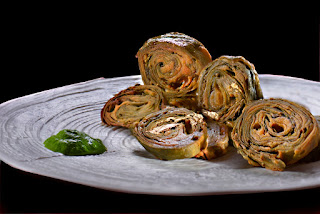 Patode
Patode
It’s time for the main course! The main course was served in a very royal manner serving the plate with multiple small copper bowls. The 6 bowls got filled with different tastes of Mughal era within no time. Mutanjan pulao, the layered rice served with nuts and dry fruits, chicken, cardamom, cloves and figs, slices of slow cooked chicken- Murg Musallam cooked in onion gravy was praiseworthy.
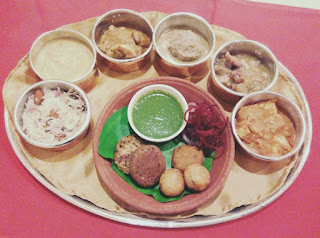 The Royal Thali
The Royal Thali
Amba Qaliya and Kancha Gola were my favourites from the lot. A sweetish preparation of lamb infused with raw mangoes, onions, garlic, ginger, coriander, dry fruits and saffron made the dish heavenly which was named as “Amba Qaliya”. Kancha Gola, the hollow lamb dumplings grabbed my attention. “The hollow in the kofta was done by using a marble sized lump of frozen ghee which gets surmounted with the meat. On slow cooking, ghee melts and oozes out leaving the center hollow, in turn infusing the flavors into the mutton coating.
It was worth saving room for desserts as you just can’t think of missing them. “Ghost ka halwa” was Chef’s best creation that touched my soul. A perfect blend of cooked meat, spices, and sugar till it gets into a thick, creamy paste. The dish made me remember of “haleem”.
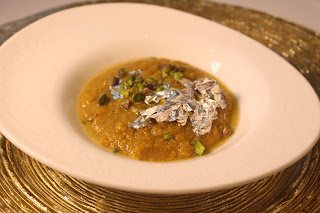 Gosht Halwa
Gosht Halwa
Vegetarians, don’t you worry. You certainly cannot be devoid of desserts; “Alu Zarda” would be a perfect dessert to satisfy a vegetarian’s sweet tooth.
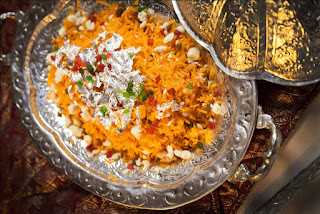 Shahi Zarda
Shahi Zarda
As history and food may seem like strange bedfellows first, but the two are inescapably intertwined. Hence, come and explore the Mughal Kitchens at lunch or dinner which will be open till 14-Nov-16. The set meals priced between Rs.1600-Rs.1800 per person. And yes! Don’t forget to relate the history while praising the delicacies. It’s time to revive the bygones!